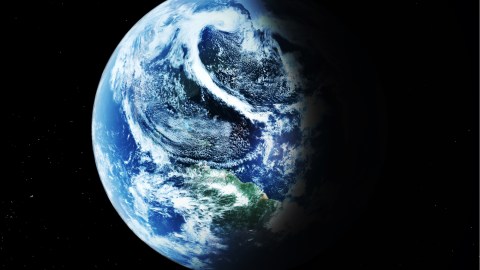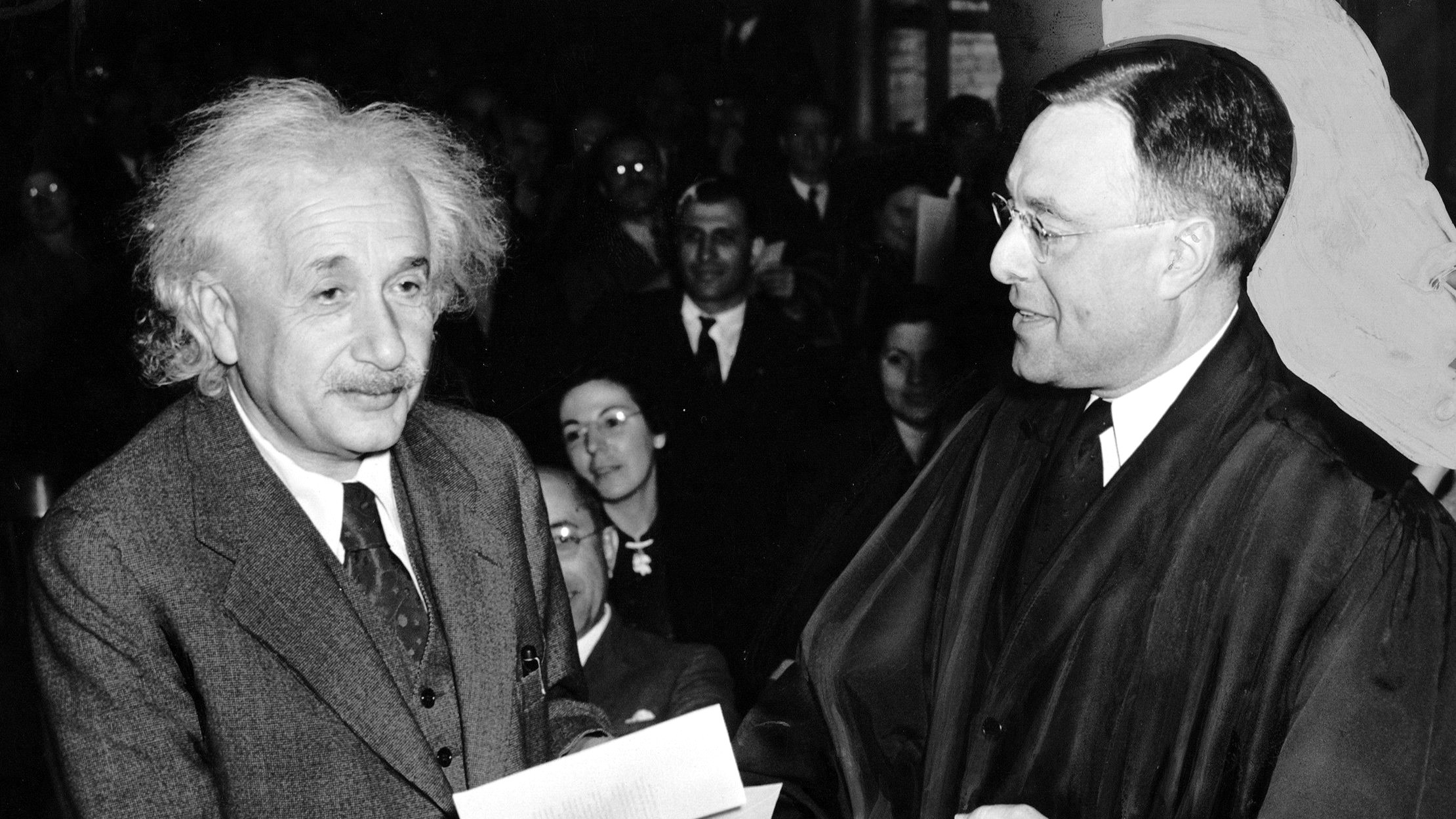One world, two aspects

When we try to understand how the world works, we have to recognize that there’s a profound split in the world. On the one hand, there are the physical things that I study in my job as a physicist, while on the other hand there are the living things, including you, me, and all of our fellow human beings. This split deserves a lot more attention than it gets. The physical aspect of the world just works so differently than does the world of living things. So here, I’d like to propose that we describe the world that we live in in terms of two distinct aspects:
- The aspect that I’ll call the World of Things, containing physical things that operate according to the laws of nature, and
- The aspect that I’ll call the World of Aliveness, containing those parts of the world which act (to some degree, at least) according to their own volition
Let me stress that each of these two aspects is as real as the other, and that they need to be seen as two facets of a single unified world. But since different things in the world can behave so differently, it is important to mentally divide the world in this way.
Let me explain what these aspects are all about. At the simplest level, the World of Things is the aspect of the world which the natural sciences can explain (or will be able to explain after foreseeable future development.) So atoms, rocks, planets, stars, galaxies, etc. would all count as parts of The World of Things. By contrast, the World of Aliveness is the aspect of the world that involves volition. I’m a human being with desires, plans, hopes, and disappointments; so are you, your loved ones and friends. Laws of nature don’t govern our behavior. We don’t need to be explained; we need to be guided.
It is important that we mentally divide up the world in this way. I’m arguing against an unspoken (or only spoken sotto voce) modern consensus that we shouldn’t picture such a division in the world. A lot of us who’ve grown up in modernity have a belief (or is it merely a hope, or only a matter of faith?) that science is capable of accounting for everything in the world, including not only human behavior but even how it feels to be human. I beg to differ.
Let me invite you to try out this “Two Aspect” approach in your own mental picture of the Universe. Start right where you are. In front of you, you have this blog displayed on a computer screen. Beyond it is the furniture of your living room or your office. The rest of your house is beyond, and then parked outside is your car. Inside and all around are material objects whose behavior a physicist can explain. (For complicated things like a car, we’d turn to an engineer.) Drop your keys, for example, and they fall. So far, so good.
But there’s a human being (namely you) reading this blog post. Perhaps you want to argue with me about something that I just said. Or perhaps you are just intrigued, and hope to learn something interesting. Whatever those thoughts are, explaining them by the laws of nature seems both impossible and beside the point. They are thoughts, after all, and one follows another by chains of association that might involve the rules of logic (if you are thinking about one of my arguments), or by other principles, or by no principles at all. You aren’t a computer, whose states follow a program. I truly believe that you are spontaneously thinking your thoughts.
In both aspects at once
So just sitting there reading, you are participating in both aspects of the world at once. The other members of your family also inhabit both of the two aspects of the world all the time. Perhaps you and your spouse have a little girl; for fun, you gently toss her into the air and then catch her. So far, she’s obeying the laws of nature. But she’s also got a mind of her own, doesn’t she? You interact with her in both aspects of the world. It is one world, after all. That is the beauty, and the strangeness, of it all.
These two aspects don’t divide the world in any spatial sense. Our bodies are all a part of the World of Things, but then each of us as a person is a part of the World of Aliveness. For most of us, most of the time, this latter aspect of the world that we share with our fellow human beings as human beings is by far the most valuable aspect. There are “billions of subjectivities” (to use a phrase of novelist and essayist Marilynne Robinson’s), constituting billions of sites for the two aspects of the world to come into intimate contact, and that are responsible for so much of what is wonderful about life (as well as much that is frustrating, or worse …)
In the place of “dreams of a final theory” (in the words of the physicist Steven Weinberg), I’m now struck by the grandeur of a world in which billions of us find our lives so precious, lived together with each other in the World of Aliveness. All that we learn in physics, astronomy, biology, or any of the other sciences devoted to illuminating the World of Things are wonderful things to understand, but they are far from exhausting what is wonderful.
I don’t think that this is radically different from the way most people think. I’m stressing it because I do think that it is different from the way many people think that they are supposed to think about the world. If you were brought up as a participant in the modern world, as I was, you probably think that you are supposed to believe that science will figure it all out eventually, with nothing left over. But how many of us really believe that to be true, especially in moments either of great joy or great pain? Or even in the daily satisfactions of ordinary life?
The value of vividly envisioning both aspects of the world is that it invites us to always regard the world in two directions, not only “downward” toward mechanistic explanation of the world, but also “upward” in the direction of our finest aspirations. Explanations are great; may we learn more and more about how the world works. But we also need all the help that we can get in figuring out the best way to live our lives – what goals we should most urgently strive for, and what means we should use to reach those goals.
Inadvertently illustrating the Two Aspects
The multiverse proposal is one of the most striking new ideas in physical cosmology, and also one of the most outlandish. It proposes that our Universe isn’t all there is, but is only one example of a huge number of separate universes. The best available popular account of the multiverse idea is The Cosmic Landscape: String Theory and the Illusion of Intelligent Design, by one of the concept’s inventors, physicist Leonard Susskind.
Here, I’m not especially interested in the multiverse concept or in how plausible it is. Instead, I’d like to focus on the first five paragraphs of Susskind’s Introduction, to see how they (inadvertently) illustrate the importance of the Two Aspects. Here’s how The Cosmic Landscape begins:
The air is very cold and still: except for the sound of my own breathing, the silence is absolute. The dry, powdery snow crackles whenever my boot touches down. Its perfect whiteness, lit by starlight, gives the terrain a luminous, eerie brilliance, while the stars fade into a continuous glow across the black celestial dome. The night is brighter on this desolate planet than on my home world. [Susskind writes as if his visit to Antarctica was to another world.] Beauty, but of a cold and lifeless kind: a place for metaphysical contemplation, if ever there was one.
Alone, I’d left the safety of the base, to think about the day’s events and to watch the sky for meteors. But it was impossible to think of anything other than the sheer enormousness and impersonal nature of the universe. The pinwheeling of galaxies, the endless expansion of the universe, the infinite coldness of space, the heat of stars being born, and their final death throes as red giants: surely this must be the point of existence. Man—life in general—seems irrelevant to the workings of the universe: a mere smudge of water, grease, and carbon on a pinpoint planet circling a star of no special importance.
Earlier, during the short stingy sunlight hours, Curt, Kip, and I had hiked about a mile to the Russian compound to see if we could find some Ivans to talk to. Stephen had wanted to come with us but his wheelchair could not navigate the snowdrifts. [Susskind is here referring to his colleagues, the physicists Curt Callan, Kip Thorne, and Stephen Hawking. Pretty good company!] The derelict compound, just a few low rusted corrugated-metal buildings, looked deserted. We banged on doors, but no life appeared. I cracked open the door and peered into the spooky interior darkness, then decided to brave entry and have a look around. As cold inside as it was outside, the compound was completely abandoned. The hundred or so dormitory rooms were unlocked but deserted. How did a hundred men disappear so completely? In silence, we hiked back to our own base.
At the bar, we found our Russian, drinking and laughing—Victor. Victor, it seems, was one of the last three Russians left [in Antarctica]. Supplies from Russia had ceased more than a year ago. They would have starved but for the fact that our own people adopted them. We never saw the other two Russians, but Victor assured us they were alive.
Victor insisted on buying me a drink, “for the cold,” and asked, “How do you like this %#&*^ place?” I told him in all my travels only once had I seen a night sky even remotely as beautiful as here.
This is beautiful writing; Susskind really brings that moving experience to life for the reader.
Here’s what strikes me, though, as a fellow physicist. Susskind finds his inspiration for “metaphysical contemplation” when looking at the night sky, where he sees a “cold and lifeless” beauty. He’s so struck by this that he’s moved to say that, “Man—life in general—seems irrelevant …”
But this last thought is an astounding non sequitur, not an inescapable deduction. And indeed, the next several paragraphs are an almost equally vivid evocation of the joys of life shared with fellow human beings. Susskind hikes to the abandoned Russian compound with good friends, and is sad about the fact that Stephen Hawking’s disability prevents him from coming along. Concerned about the fate of his Russian colleagues, Susskind is happy and relieved to find one of them at the bar back at the base. The two of them enjoy reflecting on the powerful experiences that they are sharing, good-naturedly debating whether the experience is better described as %#&*^ or as beautiful.
I can’t think of a better example of the value of seeing our world in terms of the Two Aspects, the World of Things and the World of Aliveness. True to his calling as a physicist, Susskind is eloquent and insightful about the World of Things. But he’s also got a (big!) blind spot – he truly believes that profound insights only come from contemplation of the World of Things. (“Beauty, but of a cold and lifeless kind: a place for metaphysical contemplation, if ever there was one.”) His treasured experiences as an inhabitant of the World of Aliveness, lived in company with Curt, Kip, Stephen, and Victor, are also lovingly reported, but Susskind takes them to be “irrelevant” to “contemplation.”
Why shouldn’t the very human world of physicists be as important as the physical systems that they study? If only more of us realized this! Of course, it is only human to believe that one’s professional concerns ought to be the central concerns of every serious human being. But, to the extent that we physicists give in to this kind of blindness, we’re deluding both ourselves and the public we write for.
Instead, all of us with an allegiance to science ought to nevertheless glory in the fact that it is as important for us to look “upward” toward our highest aspirations as it is to look upward at the sky.
Dr. Peter Saulson is Martin A. Pomerantz ’37 Professor of Physics at Syracuse University. This post is part of Sinai and Synapses’ project Scientists in Synagogues, a grass-roots program to offer Jews opportunities to explore the most interesting and pressing questions surrounding Judaism and science. Reprinted at ORBITER with permission.
The post One World, Two Aspects appeared first on ORBITER.





